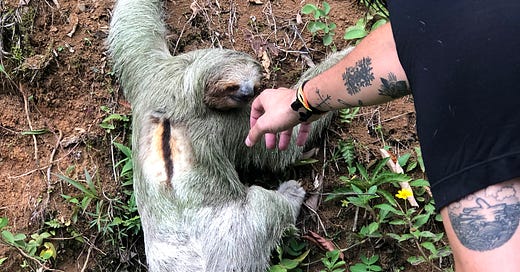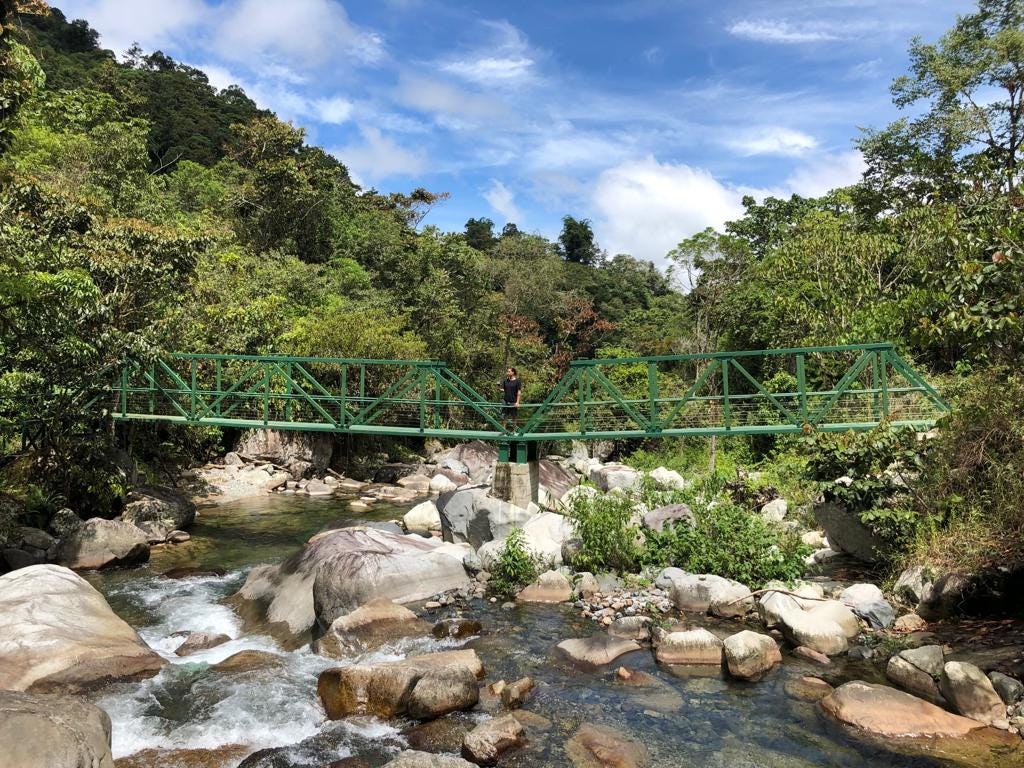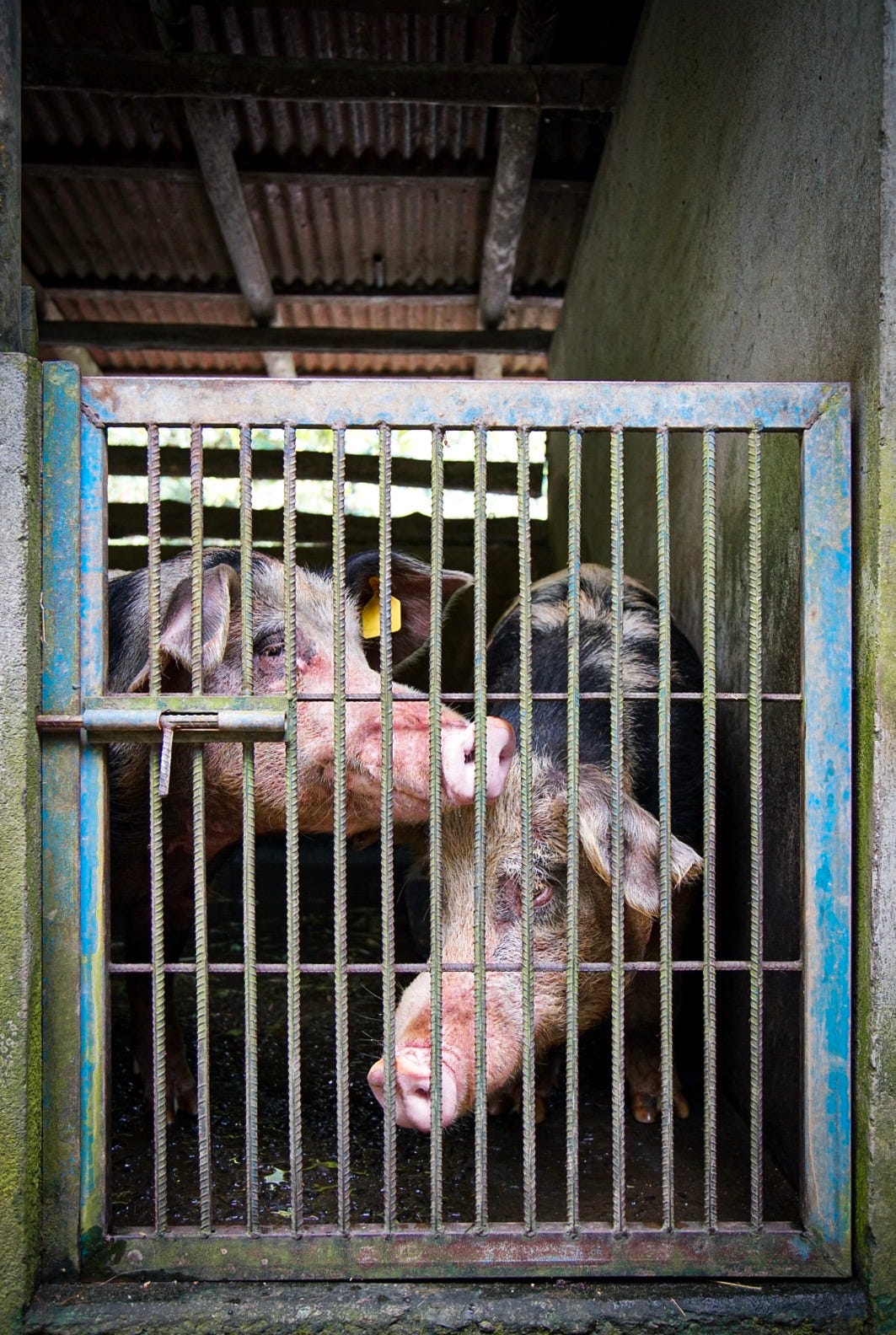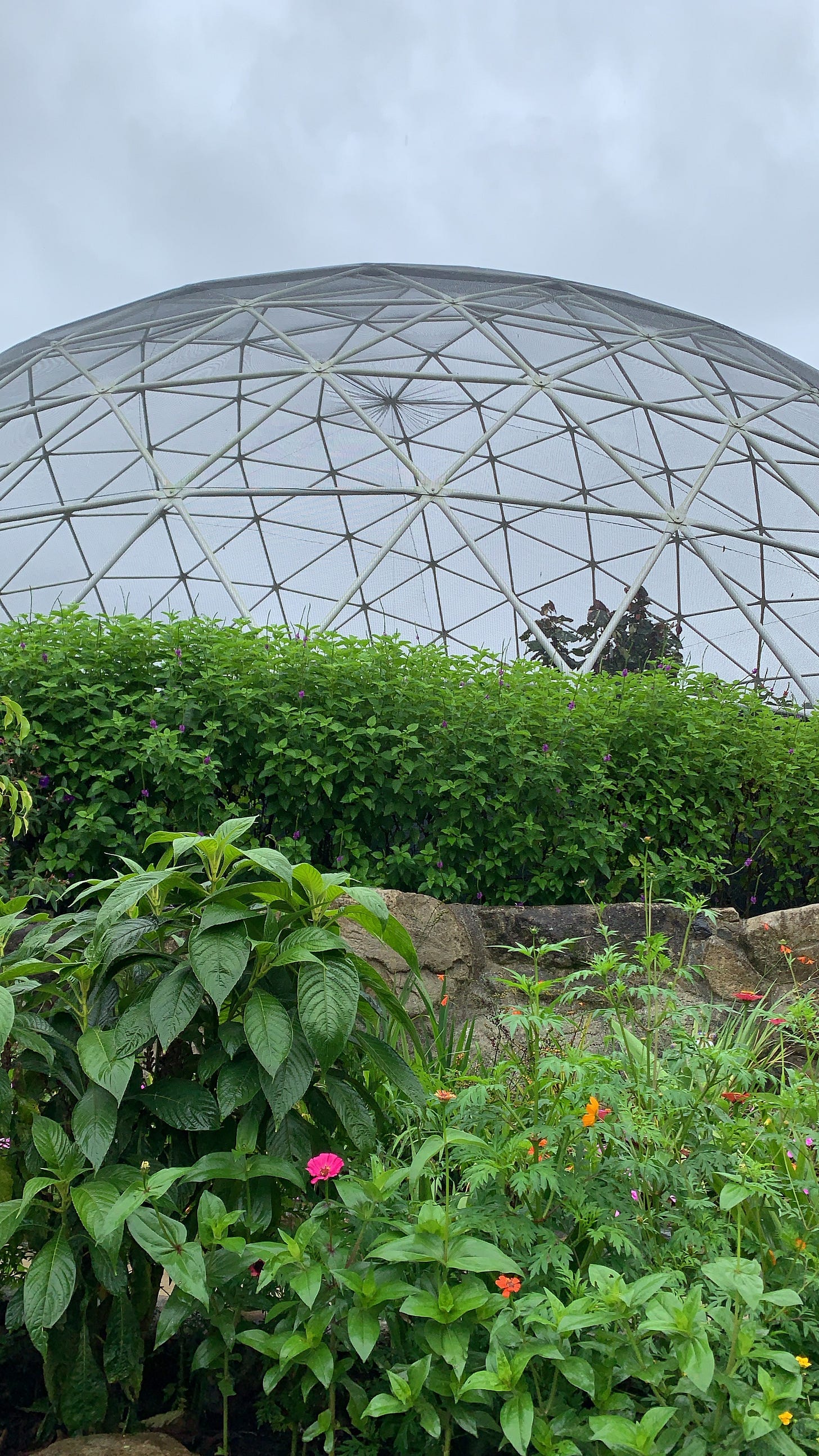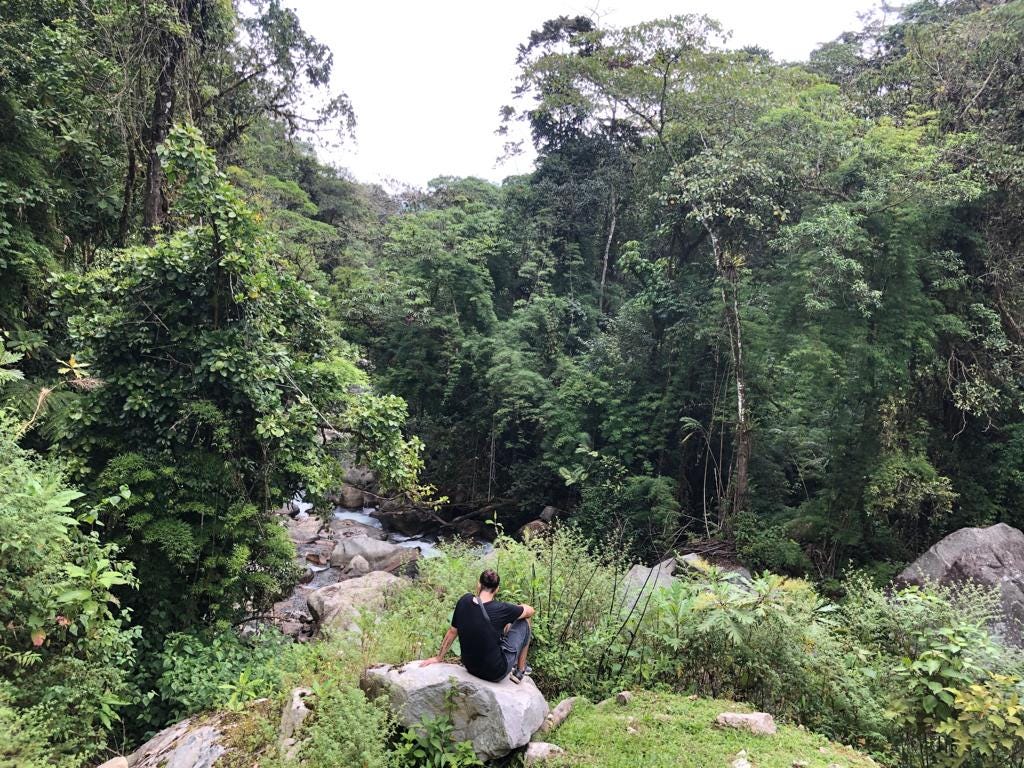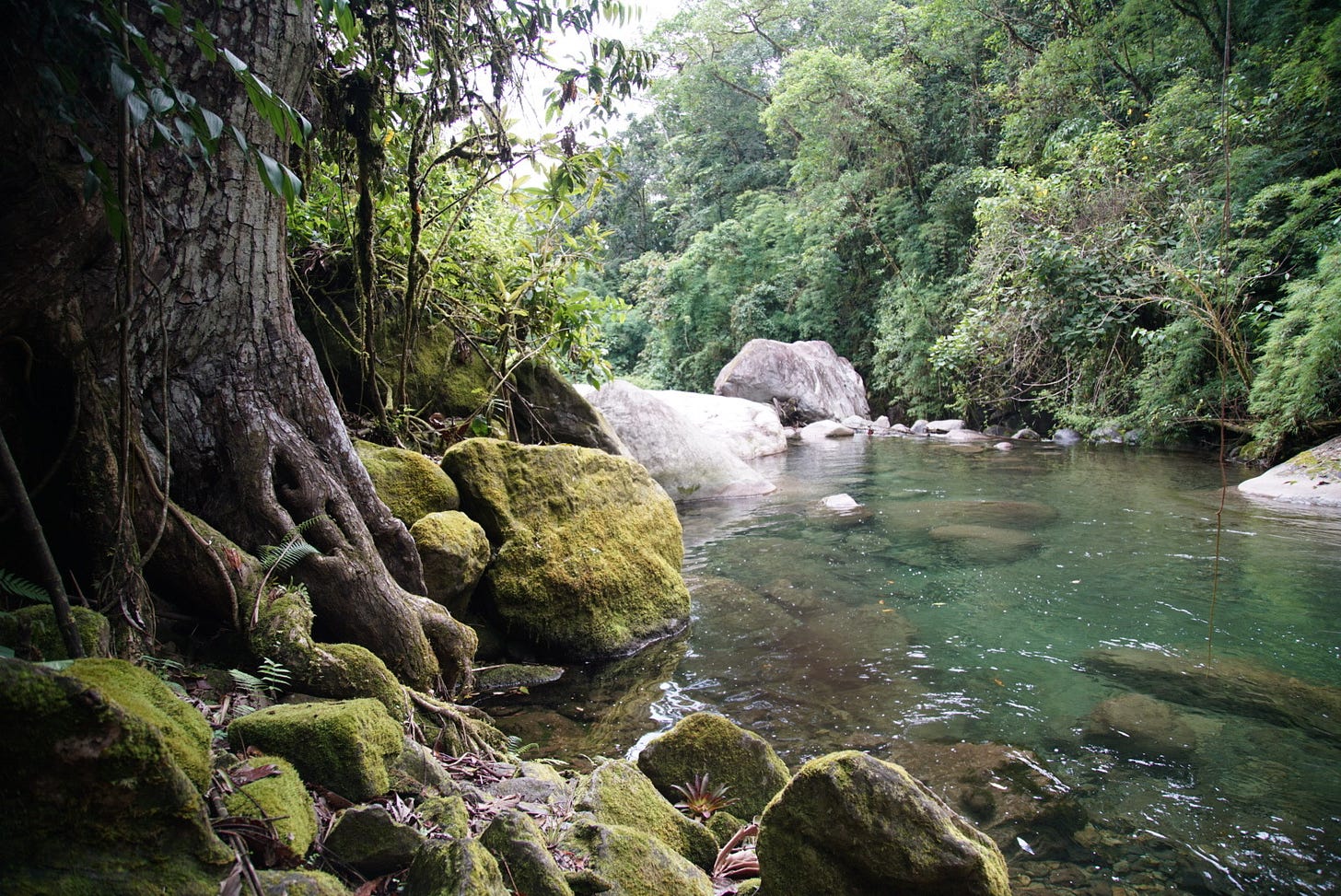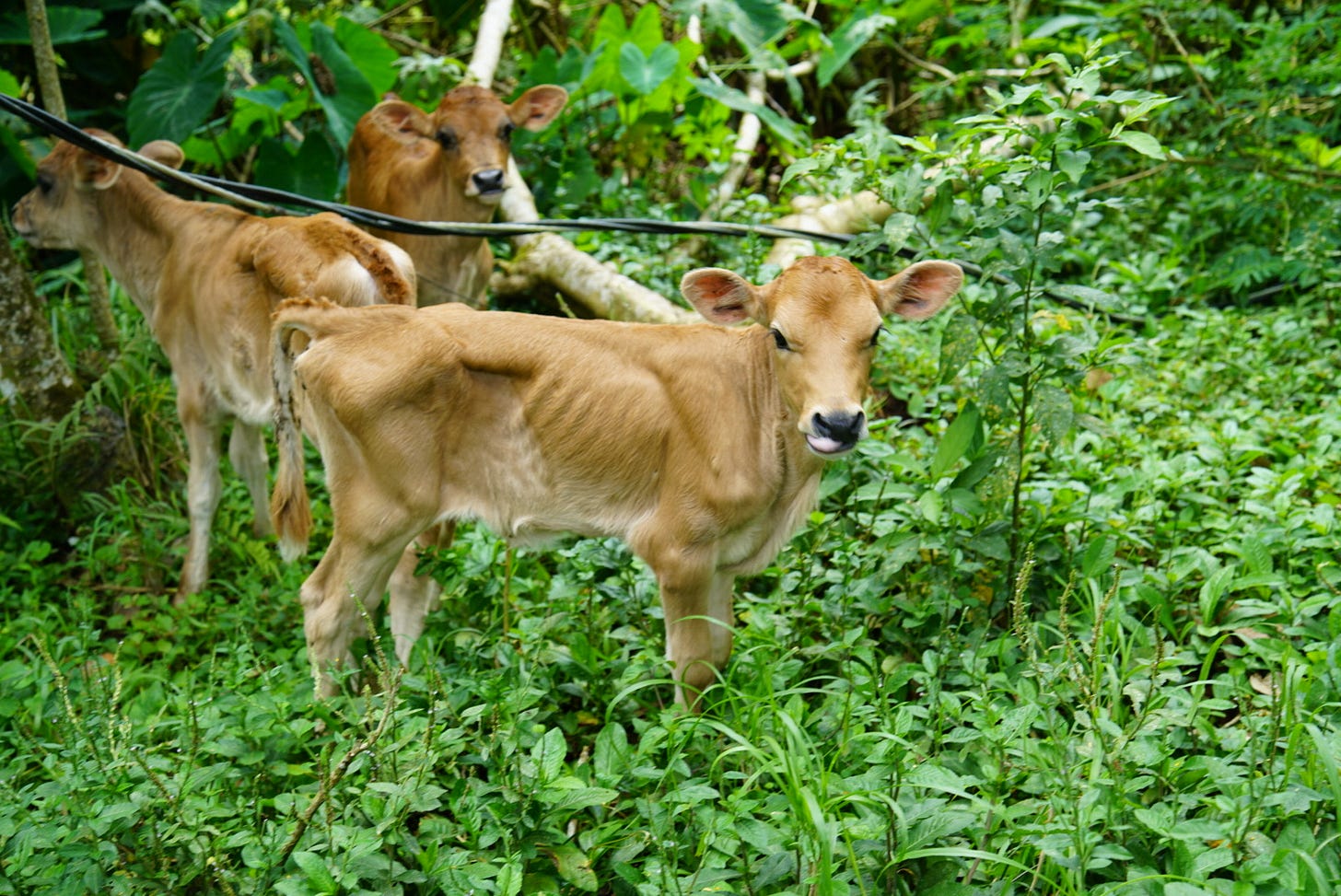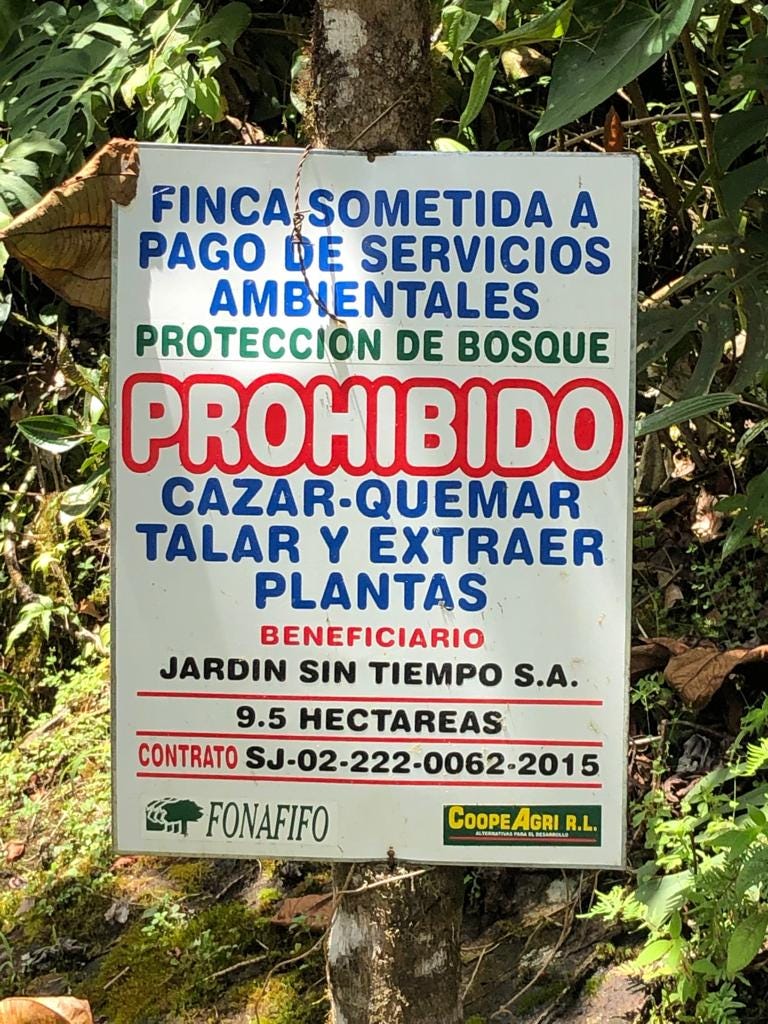Costa Rica: The last green frontier? / Costa Rica: La última frontera verde?
Not everything that appears ecological actually is / No todo lo que parece ecológico en realidad lo es
Para leer la versión en español, desliza hasta abajo
If you work or are interested in topics like sustainability, permaculture, or eco-architecture, Costa Rica is one of those places you will eventually have to visit. It is a country that has made great efforts to protect its nature. I enjoyed my trip through its beaches and jungles, but I also noticed the prevalence of greenwashing in various corners. It is a nation that radiates positivity, but I could see that not everything that appears ecological actually is.
One of the things I have learned is to drive more slowly, and in Costa Rica, road speeds are generally low. This is to allow enough time to brake in case wild animals are using the road to cross. I witnessed traffic jams stretching for kilometers because a family of coatis had invaded one of the lanes. I had to get out of the car to help a sloth climb in a hard-to-reach area. At times, it feels like being on a great safari where we are somehow reminded that the lives of other species are equally—or even more—valuable than ours.
I ended up in Costa Rica because I was setting up a regenerative systems agency for companies looking to transition to a new climate paradigm. It was a road trip with one of the co-founders, visiting biodynamic farms, permaculture centers, and eco-friendly hotels. At each of our stops, I met very interesting people, but one by one, I saw that not all intentions were pure—from the shores of Santa Teresa to the mountains of Chirripó.
One of the villages I visited turned out to be a polyamorous cult led by friends who left their jobs in Silicon Valley to move to Central America. On the flagship farm for sustainable agriculture, I witnessed the mistreatment of exploited animals. The conscious development/eco-hotel presented to me as an investment opportunity would be built on the ancient ruins of a Mayan cemetery (but the entrepreneurs already had a contact in the Ministry who would help them coordinate that issue to avoid hindering the excavations).
Most of the projects I saw had a low environmental impact (recycling, composting, waste minimization, rainwater harvesting, growing their own food, etc.), and people genuinely seem interested in creating in a more organic way. But at the end of the day, it is a place that has been permeated by capitalism, real estate business, and the exploitation of a good lifestyle to market what is now one of the few places that have been less touched by the locomotive of [inverse] progress.
This drive to move forward has made Costa Rica an attractive place for foreign investors selling land in the jungle and developing limited tourist infrastructure for foreigners who can afford it. (Around 20% of the country's population lives in poverty, and 6% in extreme poverty: people living on less than $2 USD per day). None of this diminishes the fact that this is one of the most biodiverse places on the planet, home to over 500,000 species of animals. 98% of the energy used in the country comes from renewable sources. It is undoubtedly a global example, but I wonder if it's only a matter of time until Costa Rica goes from being a natural gem to having shopping malls and skyscrapers in the jungle (albeit built with bamboo).
There are hundreds of public and private organizations caring for the environment. There are scientists and activists defending life in the country. It has a deep spiritual scene (where I had the most profound ayahuasca ceremony to date), and the surfing community has a great vibe. It is truly a magical place surrounded by imposing volcanoes and endless beaches, where nights resonate with the sounds of millions of insects that quiet down in the mornings to make way for bands of howler monkeys jumping through the treetops. Here, rivers and waterfalls abound, as do toucans, tapirs, jaguars, and macaws. Costa Rica is one of the last bastions of a world on the brink of extinction.
Si trabajas o estás interesado en temas como la sostenibilidad, la permacultura, o la eco-arquitectura, Costa Rica es uno de esos lugares que eventualmente tendrás que visitar; es un país que ha hecho grandes esfuerzos por proteger su naturaleza. Disfruté mi viaje por sus playas y selvas, pero también noté la prevalencia del greenwashing en diversos rincones. Es una nación que irradia positivismo—pero pude ver que no todo lo que parece ecológico en realidad lo es.
Una de las cosas que he aprendido es a conducir más despacio y en Costa Rica, las velocidades en carretera son generalmente bajas. Esto con el fin de tener tiempo suficiente para frenar en caso de que animales salvajes estén usando la carretera para cruzar. Vi cómo se hacían trancones de kilómetros porque una familia de coatíes había invadido uno de los carriles. Tuve que bajar del carro para ayudar a un oso perezoso a trepar por una zona de difícil acceso. A ratos se siente como estar en un gran safari donde de alguna forma nos obligan a recordar que las vidas de otras especies tienen igual—o hasta más—valor que las nuestras.
Terminé en Costa Rica porque estaba montando una agencia de sistemas regenerativos para empresas que querían transicionar hacia un nuevo paradigma climático. Fue un viaje por carretera con uno de los cofundadores, visitando granjas biodinámicas, centros de permacultura, y hoteles ecológicos. En cada una de nuestras paradas conocí gente muy interesante, pero uno a uno fui viendo que no todas las intenciones eran puras—desde las costas de Santa Teresa hasta las montañas de Chirripó.
Una de las aldeas a las que fui terminó siendo un culto poli amoroso llevado por unos amigos que dejaron sus trabajos en Silicon Valley para mudarse a Centroamérica. En la granja insignia para temas de agricultura sostenible vi cómo maltrataban animales explotados. El desarrollo consciente/eco-hotel que me presentaron como oportunidad de inversión sería construido sobre las antiguas ruinas de un cementerio maya (pero los empresarios ya tenían un contacto en el Ministerio que les ayudaría a coordinar ese tema para que no frenaran las excavaciones).
La mayoría de proyectos que vi tenían bajo impacto medioambiental (reciclan, compostan, minimizan desechos, capturan agua de lluvia, cultivan su propia comida, etc.) y la gente realmente parece interesada por crear de manera más orgánica, pero al final del día es un lugar que ha sido permeado por el capitalismo, los negocios de bienes raíces, y el aprovechamiento de un buen estilo de vida para mercadear lo que es hoy uno de los pocos lugares que han sido menos tocados por la locomotora del progreso [inverso].
Esa necesidad por avanzar ha convertido a Costa Rica en un lugar llamativo para inversionistas extranjeros vendiendo terrenos en la jungla y desarrollando una infraestructura turística limitada para foráneos que pueden pagarla; alrededor del 20% del país vive en la pobreza y el 6% en la pobreza extrema (gente que vive con menos de $2 USD al día). Nada de esto quita que este sea uno de los lugares más biodiversos del planeta, el hogar de más de 500,000 especies de animales. El 98% de la energía que usan el territorio viene de fuentes renovables. Es sin duda un ejemplo mundial, pero me pregunto si es solo cuestión de tiempo hasta que Costa Rica pase de ser una joya natural a tener centros comerciales y rascacielos en la jungla (eso sí, construidos en bambú).
Existen cientos de organizaciones públicas y privadas que cuidan el medioambiente. Hay científicos y activistas defendiendo la vida en el país. Tiene una movida espiritual profunda (ahí tuve la ceremonia de ayahuasca más profunda hasta ahora) y la comunidad surfista tiene mucha onda. Es un lugar realmente mágico rodeado de imponentes volcanes y playas interminables, donde las noches retumban con los sonidos de millones de insectos que callan en las mañanas para darle paso a las bandas de monos aulladores que saltan por las copas de los árboles. Aquí abundan los ríos y las cascadas, los tucanes, tapires, jaguares y guacamayas. Costa Rica es uno de los últimos bastiones de un mundo en extinción.

